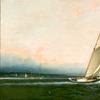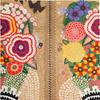Featured 19th Century Painter: Allan Brooks (Canadian, 1869 - 1945)
- March 15, 2021 07:11
Allan Brooks was born in Etawah, India, the son of a civil engineer who was working on construction of the East India Railway. He spent the years 1873 -1881 in England where he was sent as a means to “escape the unaccustomed diseases of a deadly climate”. During his stay in England his father, himself a noted ornithologist and specimen collector and who encouraged young Brooks in his own budding interest in birds, arranged for his introduction three noted British ornithologists, Canon Tristam, Henry Seebohm and John Hancock. His father moved the family to Ontario, Canada in 1881, where Brooks spent his time collecting birds and studying his surroundings. He learned the proper methods of collecting specimens and preparing bird skins for scientific collections from Thomas McIlwraith, the Ontario ornithologist. The family moved to Chilliwak, British Columbia in 1887. It was British Columbia that artist Allan Brooks was to call home for the remainder of his life. During the late 1880s and early 1890s, Brooks furnished specimens to the Smithsonian Institution and to American naturalists, as there was no support for artists-naturalists from the Canadian naturalists or institutions. After receiving encouragement from William Brewster, ornithological curator at Museum of Comparative Zoology at Harvard University, Brooks began his career as an illustrator of birds. Between 1898 and 1904, his drawings of birds were published in Recreation magazine. Brooks’ association with Frank Chapman of the American Museum of Natural History resulted in his providing Bird Lore magazine (precursor to Audubon Magazine) with colored illustrations from 1907 to 1932. In 1909, reproductions of Allan Brooks’ finely detailed watercolors appeared in William Dawson’s The Birds of Washington. From 1911 to 1914, Brooks was in California preparing watercolors for Dawson’s The Birds of California, published in 1923. Allan Brooks’ watercolor paintings appear in John C. Phillips, The Natural History of Ducks, a four volume set published between 1922 and 1926; Edward H. Forbushes, Birds of Massachusetts, 1929; Hoffman’s Birds of the Pacific States, 1927; and Bailey’s Birds of New Mexico, 1929. Between 1932 and 1939 his bird illustrations appeared National Geographic Magazine. His only Canadian commission of note was Percy Taverner’s Wild Birds of Western Canada, published in 1926. Brooks was also an avid sportsman and painted “big game” with the same fidelity as he did with birds. It has been said that his interest centers first in the animal--he cannot avoid painting a portrait, whether of caribou, antelope or cougar, and his subject dominates or overrides a scene of immortal beauty. It is truly remarkable that Brooks had no formal training in art and yet could render such exquisite paintings of wildlife. Although he spent most of his time in the field or concentrating on his illustration commission, he managed to periodically exhibit his work in the 1920s and 30s. Exhibitions included: Cooper Ornithological Club, Los Angeles Museum (1926, 1928, 1936); 44th meeting of the American Ornithologists’ Union, Ottawa (1926); and Fine Arts Gallery, Bilboa Park, San Diego (1928).











_-Closing-the-Distance_100x100_c.jpg)









